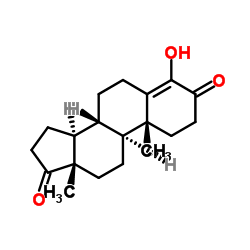The role of estrogen in the developmental appearance of sensory-motor behaviors in the zebrafish (Danio rerio): The characterization of the “listless” model
Bryan P. Nelson, Russ P. Henriet, Andrew W. Holt, Katherine C. Bopp, Alexander P. Houser, Ottie E. Allgood, James E. Turner, Bryan P. Nelson, Russ P. Henriet, Andrew W. Holt, Katherine C. Bopp, Alexander P. Houser, Ottie E. Allgood, James E. Turner
Index: Brain Res. 1222 , 118-28, (2008)
Full Text: HTML
Abstract
The brain is a steroidogenic organ and is thus dependent on estrogen for many aspects of its development and maintenance in both males and females. The purpose of this study was to develop a model to investigate the effect of estrogen on zebrafish sensory-motor (S-M) maturation through mechanisms found in the central nervous (CNS) and peripheral nervous (PNS) systems. In these experiments the aromatase inhibitor (AI), 4-hydroxy androstenedione (4-OH-A), which blocks estrogen synthesis, was used to diminish estrogen's effects on zebrafish CNS and PNS development. During these various treatments the zebrafish were analyzed for neurological deficits, including tactile response, swimming movements, vestibular behavior, pectoral fin and eye movements. Over a three to five day time period (48–168 h post fertilization), in response to AI treatment, none of these S-M behaviors were developmentally expressed creating a “listless” or non-responding condition. Furthermore, when the AI was removed from the treatment medium the S-M behaviors were fully expressed over a two to three day time period. Most importantly, when estrogen was added at the same time as the AI in a co-treatment paradigm, normal developmental appearance of S-M behaviors was rescued in all neurological parameters measured. Furthermore, the addition of estrogen alone after AI washout accelerated the recovery of the tactile response during the first 24 h of treatment. Treatment of developing zebrafish with the selective estrogen receptor blocker ICI 182,780 mimicked the deficit in S-M behaviors caused by AI treatment. This deficit was overcome by low concentrations of estrogen in a co-treatment paradigm with high ICI levels indicating the possibility of a non-genomic mechanism for estrogen's actions on the developmental expression of these S-M behaviors. Eventually, AI exposed fish died of cardiac arrest 4 to 5 days after the start of treatment; however, AI/estrogen co-treatment allowed for 90–100% survival and the maintenance of normal heart rates during this time period. In conclusion, these studies have demonstrated that the presence of estrogen in the early developing zebrafish embryo is necessary for the proper developmental expression of critical nervous system S-M behaviors necessary for survival, as well as the health of the cardiovascular system. These studies also establish a unique “listless” model for further analysis of estrogen's role in the development of brain, brainstem, and spinal cord circuitry related to the maturation of these behavioral and cardiovascular phenomena.
Related Compounds
| Structure | Name/CAS No. | Molecular Formula | Articles |
|---|---|---|---|
 |
Formestane
CAS:566-48-3 |
C19H26O3 |
|
Screening estrogenic activities of chemicals or mixtures in ...
2012-01-01 [PLoS ONE 7 , e36069, (2012)] |
|
Combined inhibitory effect of formestane and herceptin on a ...
2010-07-01 [Cancer Sci. 101 , 1661-9, (2010)] |
|
The effects of aromatase inhibitors and selective estrogen r...
2007-10-01 [Curr. Eye Res. 32(10) , 819-27, (2007)] |
|
Coadministration of the aromatase inhibitor formestane and a...
2007-04-01 [Planta Med. 73(4) , 318-22, (2007)] |
|
Computer-aided structure analysis of an epimerized dehydroep...
2010-03-01 [Steroids 75(3) , 265-71, (2010)] |